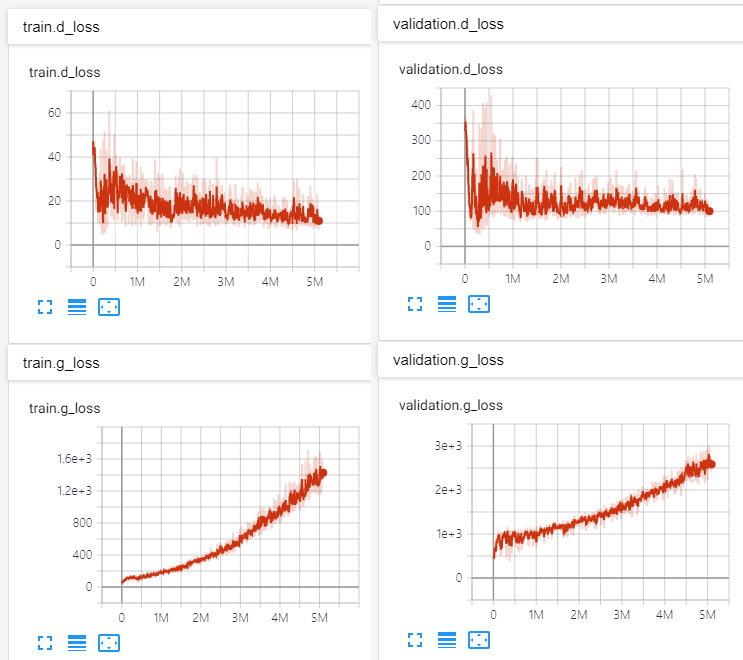Unofficial PyTorch implementation of MelGAN vocoder
- MelGAN is lighter, faster, and better at generalizing to unseen speakers than WaveGlow.
- This repository use identical mel-spectrogram function from NVIDIA/tacotron2, so this can be directly used to convert output from NVIDIA's tacotron2 into raw-audio.
- Pretrained model on LJSpeech-1.1 via PyTorch Hub.
Tested on Python 3.6
pip install -r requirements.txt- Download dataset for training. This can be any wav files with sample rate 22050Hz. (e.g. LJSpeech was used in paper)
- preprocess:
python preprocess.py -c config/default.yaml -d [data's root path] - Edit configuration
yamlfile
python trainer.py -c [config yaml file] -n [name of the run]cp config/default.yaml config/config.yamland then editconfig.yaml- Write down the root path of train/validation files to 2nd/3rd line.
- Each path should contain pairs of
*.wavwith corresponding (preprocessed)*.melfile. - The data loader parses list of files within the path recursively.
tensorboard --logdir logs/
Try with Google Colab: TODO
import torch
vocoder = torch.hub.load('seungwonpark/melgan', 'melgan')
vocoder.eval()
mel = torch.randn(1, 80, 234) # use your own mel-spectrogram here
if torch.cuda.is_available():
vocoder = vocoder.cuda()
mel = mel.cuda()
with torch.no_grad():
audio = vocoder.inference(mel)python inference.py -p [checkpoint path] -i [input mel path]
See audio samples at: http://swpark.me/melgan/. Model was trained at V100 GPU for 14 days using LJSpeech-1.1.
- Seungwon Park @ MINDsLab Inc. (yyyyy@snu.ac.kr, swpark@mindslab.ai)
- Myunchul Joe @ MINDsLab Inc.
- Rishikesh @ DeepSync Technologies Pvt Ltd.
BSD 3-Clause License.
- utils/stft.py by Prem Seetharaman (BSD 3-Clause License)
- datasets/mel2samp.py from https://github.com/NVIDIA/waveglow (BSD 3-Clause License)
- utils/hparams.py from https://github.com/HarryVolek/PyTorch_Speaker_Verification (No License specified)
- How to Train a GAN? Tips and tricks to make GANs work by Soumith Chintala
- Official MelGAN implementation by original authors
- Reproduction of MelGAN - NeurIPS 2019 Reproducibility Challenge (Ablation Track) by Yifei Zhao, Yichao Yang, and Yang Gao
- "replacing the average pooling layer with max pooling layer and replacing reflection padding with replication padding improves the performance significantly, while combining them produces worse results"

